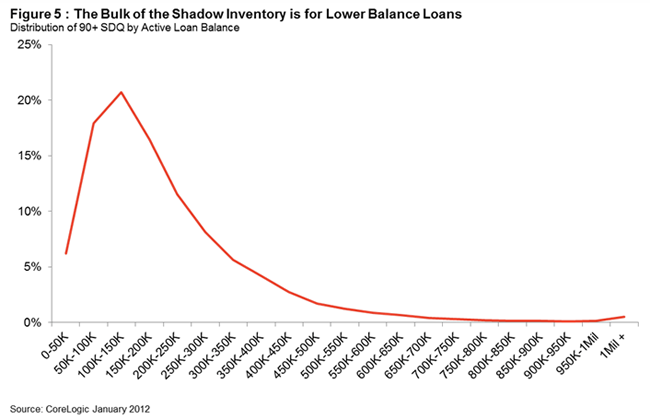A report released this morning by CoreLogic shows that the shadow inventory, composed of homes that are either in bank owned real estate (REO), in the foreclosure process, or seriously delinquent, continues to be, as CoreLogic's CEO Anand Nallathambi said, "persistent." The residential shadow inventory as of January was virtually unchanged from the last CoreLogic report based on October data, at 1.6 million units, a six month supply at the current sales rate.
CoreLogic estimates the current stock of properties in the shadow inventory, also known as pending supply, by calculating the number of distressed properties not currently listed on multiple listing services (MLSs) that are seriously delinquent, in foreclosure and real estate owned (REO) by lenders. Transition rates of "delinquency to foreclosure" and "foreclosure to REO" are used to identify the currently distressed non-listed properties most likely to become REO properties. Properties that are not yet delinquent, but may become delinquent in the future, are not included in the estimate of the current shadow inventory. Shadow inventory is typically not included in the official metrics of unsold inventory.
On a year-over-year basis the inventory was down from 1.8 million units or an 8-months' supply in January of last year. At present the flow of new seriously delinquent (90+ days) mortgages into the shadow inventory is being offset by the roughly equal liquidation of properties through REO and pre-foreclosure sales.
Based on current estimates of the visible inventory (both distressed and non-distressed), the 1.6 million units in the shadow inventory represent half of the 3 million properties that are currently seriously delinquent, in foreclosure, or in REO. For every two homes available for sale, there is one home in the "shadows." The shadow inventory includes 800,000 units that are seriously delinquent (3.1-months' supply), 410,000 that are in some stage of foreclosure (1.6-months' supply) and 400,000 are already in REO (1.6-months' supply).
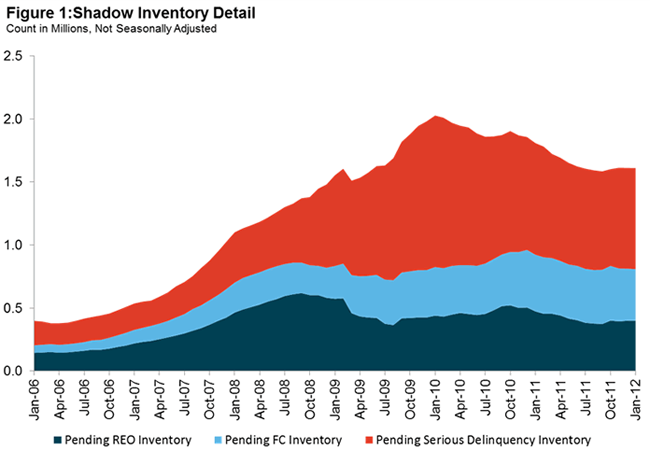
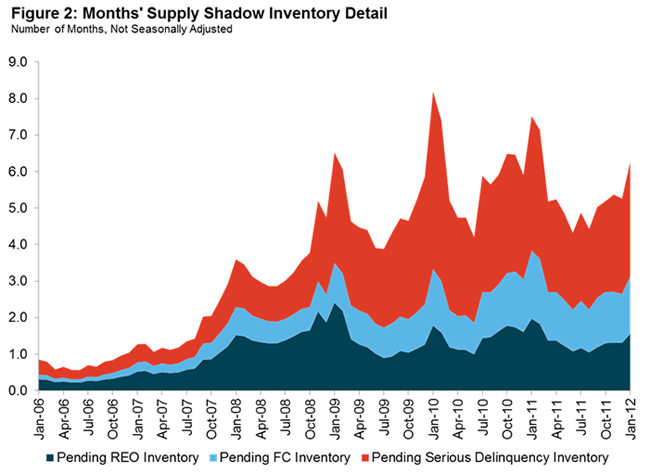
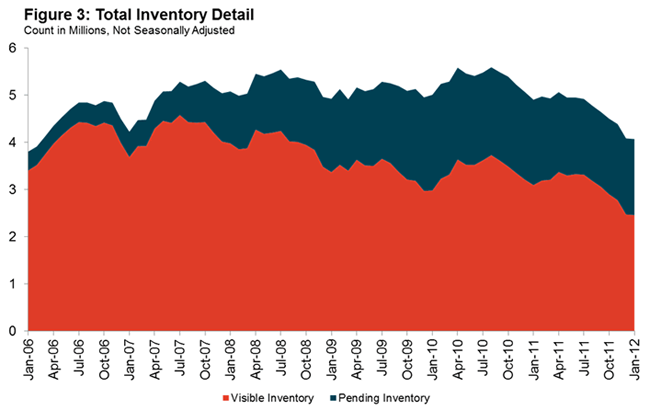
"Almost half of the shadow
inventory is not yet in the foreclosure process," said Mark Fleming, chief
economist for CoreLogic. "Shadow inventory also remains concentrated in
states impacted by sharp price declines and states with long foreclosure
timelines." Florida, California,
and Illinois together account for more than one third of the shadow
inventory. Those states along with New
York, Texas, and New Jersey account for one half.
"The shadow inventory remains persistent even though many other metrics of the housing market show signs of improvements.," Nallathambi said. "In some hard-hit markets the demand for REO and distressed property is now outstripping supply. As we move into what is traditionally the peak selling season for real estate, servicers will certainly be watching closely to see if now is the time to move more inventory out of the shadows.
Even through there have been over 3 million distressed home sales since January 2009, the shadow inventory in January was at the same level as in January 2009, the period when home prices were falling the fastest.
Loans with outstanding balances between $100,000 and $125,000 represent the highest concentration in the shadow inventory and the decline in the overall supply of homes versus one year ago is being driven by a decline in higher balance loans while the supply of loans with balances under $75,000 is up three percent from January 2011
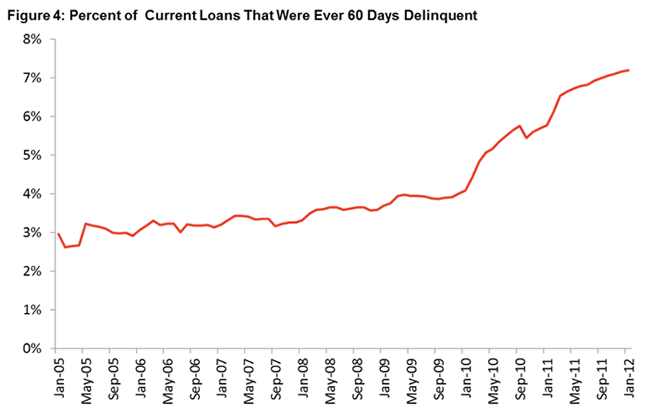
Of all mortgaged homeowners in the country, 15.5 percent have been over 60 days delinquent at some point in the past, up from 14.3 percent one year ago. The percentage of borrowers who are current on their mortgages but have been 60 or more days delinquent at some point was 7.2 percent in January compared to 5.7 percent one year earlier.
